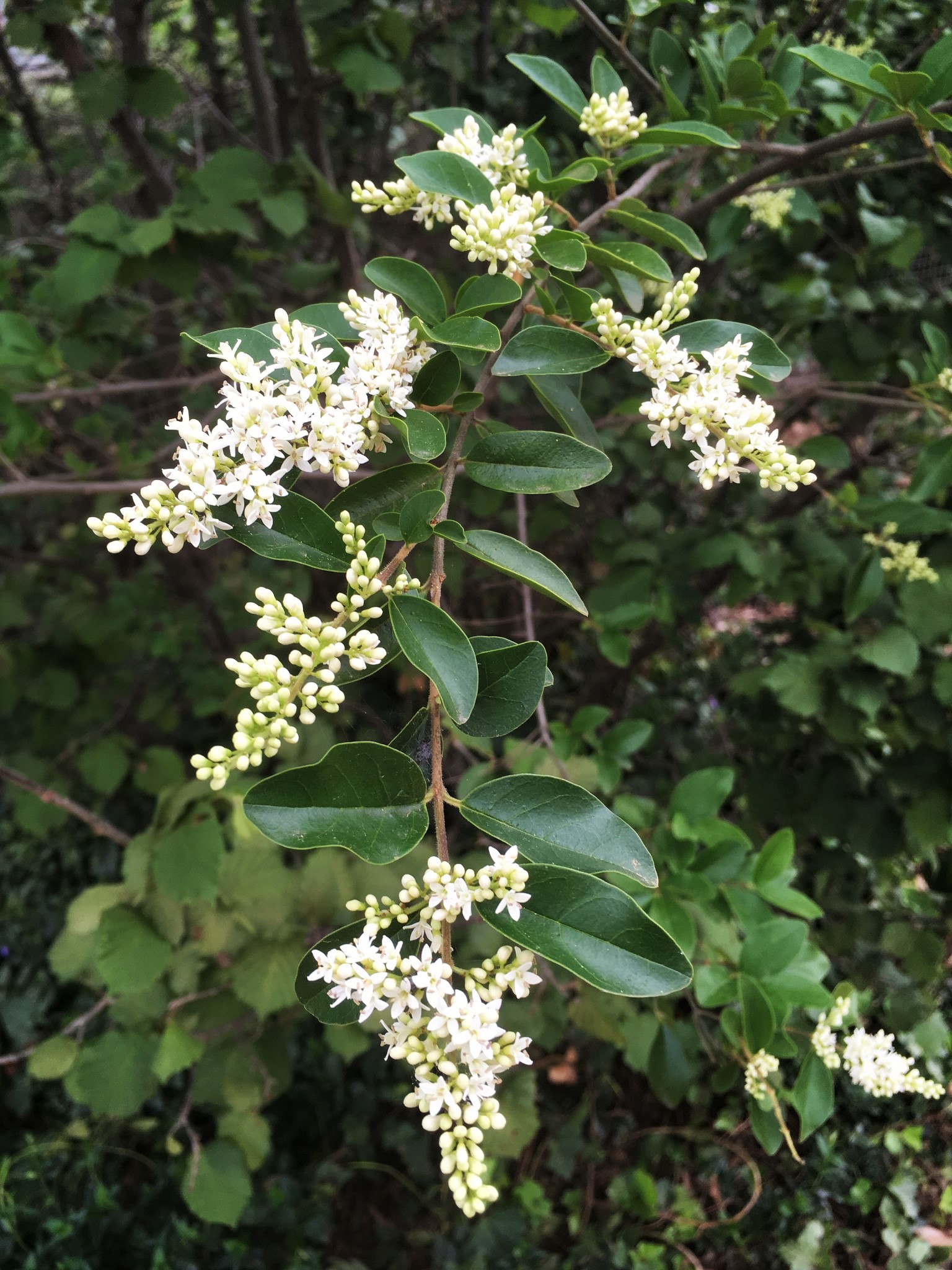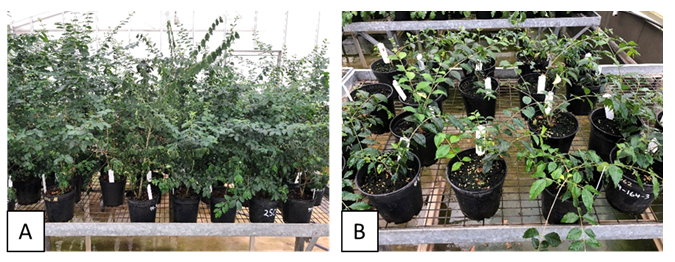Small-leaf privet
Small-leaf privet (Ligustrum sinense) is a serious environmental weed throughout Australia, with infestations threatening biodiversity in NSW and elsewhere. It also invades plantation forests, orchards and pastures.
This sub-project focuses on the privet lace bug Leptoypha hospita, a biocontrol agent for small-leaf privet that was introduced in New Zealand in 2015. The lace bug has been extensively tested in quarantine in the USA and New Zealand and as a result, its biology, life history and host range are well documented. In its native range (eastern Asia) the lace bug is reported to attack a range of Ligustrum species. Ligustrum australianum, a native species in Australia, is in the same genus as the target weed and needs to be first tested to determine if the lace bug should be considered any further for biocontrol of small-leaf privet in Australia.
Andrew McConnachie of NSW Department of Primary Industries is leading this sub-project.

Small-leaf privet (Ligustrum sinense) at Mt Manjura in the Australian Capital Territory (Photo: B. Gooden).
Background
Why is the weed a problem?
Dense stands of small-leaf privet compete with native vegetation and can prevent their establishment and survival. Small-leaf privet berries and leaves have been documented to be poisonous to humans and livestock if ingested, although no poisoning cases have yet been reported in Australia. Its pollen (and possibly its perfume) however, is reported to cause allergic reactions and hay fever in humans.
How is the weed currently managed?
Management of small-leaf privet can be difficult because of its ability to regenerate vigorously from root and stem suckers. Hand-weeding of small and medium-sized small-leaf privet plants can provide good control, but it is important to minimise soil disturbance to prevent reinfestation. Herbicides are primarily used to control dense stands of small-leaf privet where little or no other valuable vegetation is present. Complete coverage of the foliage of actively growing plants with the herbicide is necessary for successful control. Basal bark application and stem injection of herbicide are used to control single large individual plants amongst other vegetation.
Previous research
Detailed information about the privet lace bug can be found in the release application submitted to the New Zealand Environmental Protection Authority:
and in a fact sheet produced by Landcare Research in New Zealand:
https://www.landcareresearch.co.nz/__data/assets/pdf_file/0004/105889/Privet-lace-bug.pdf
Trust-funded sub-project
The key activities of the sub-project are to:
- Import the privet lace bug into an Australian quarantine facility and establish/maintain a culture.
- Test the lace bug on the Australian native species Ligustrum australianum under no-choice and paired-choice conditions in the quarantine.
If the lace bug feeds and develops on L. australianum at significant levels, the culture will be terminated, and the findings reported. If, however, the tests demonstrate that the lace bug does not pose a threat to this native species, the insect culture will continue to be maintained, and a proposal for testing additional species relevant to the Australian context will be developed for consideration by the NSW Environmental Trust.
Progress
2020/21
Because of travel restrictions due to COVID-19, it was not possible to travel to New Zealand to collect from the field the candidate agent for small leaf privet, the privet lace bug Leptoypha hospita and import it into a quarantine in Australia. Consequently, host-specificity testing of the candidate agent on Ligustrum australianum, the Australian native species most closely related to the target weed, did not commence. Nonetheless, plants of the target weed, and of the two non-target species that will be tested once a culture of the agent is available, were sourced and propagated.

The target weed small leaf privet, Ligustrum sinense (A) and the non-target Australian native species Ligustrum australianum (B) propagated at the NSW DPI Orange Agricultural Institute.


